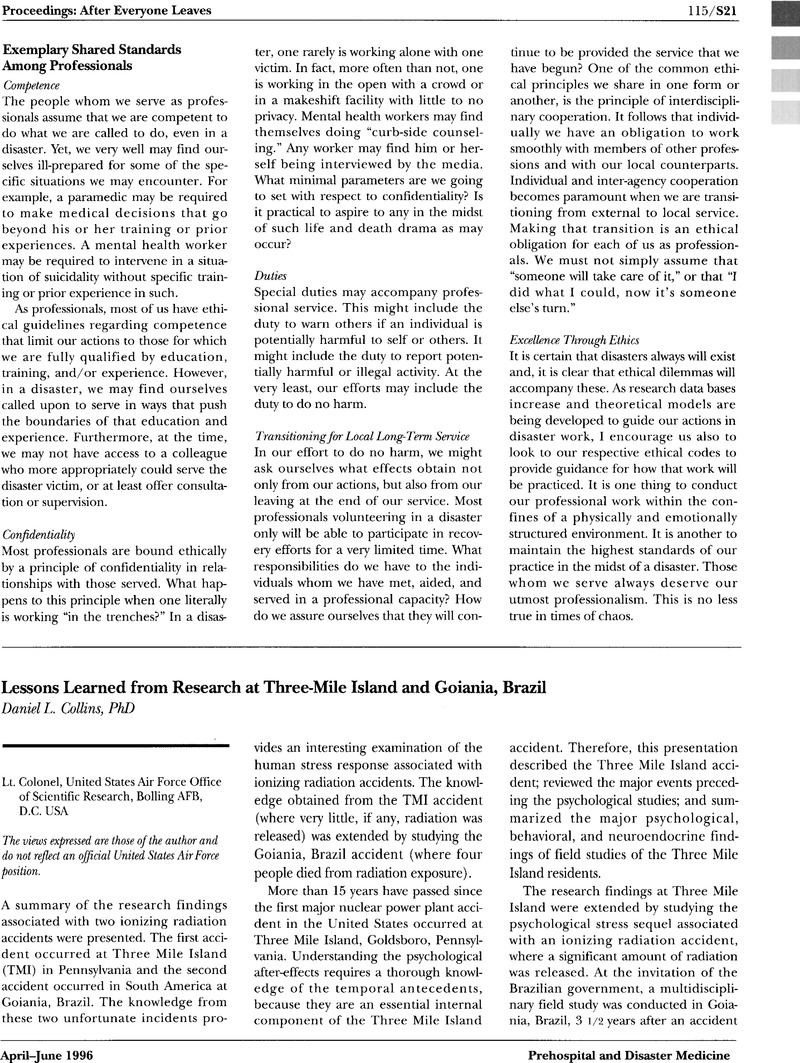No CrossRef data available.
Article contents
Lessons Learned from Research at Three-Mile Island and Goiania, Brazil
Published online by Cambridge University Press: 28 June 2012
Abstract
An abstract is not available for this content so a preview has been provided. As you have access to this content, a full PDF is available via the ‘Save PDF’ action button.

- Type
- Medical-Psychological Management of Large-Scale Disasters
- Information
- Copyright
- Copyright © World Association for Disaster and Emergency Medicine 1996
References
Collins, DI, Engel, RE, Grundl, JA et al. : Balancing radiation benefits and risks; The needs of an informed public. Committee on Interagency Radiation Research and Policy Coordination (CIRHPC). Subpanel on Public Education, Washington, DC, 1994.Google Scholar
Collins, DL, Carvalho, AB: Chronic stress from the Goiania 137Cs radiation accident. Behavioral Medicine 1993;18: 149–157.CrossRefGoogle ScholarPubMed
Collins, DL: Behavioral differences of irradiated persons associated with the Kyshtym, Chelyabinsk and Chernobyl nuclear accidents. Military Medicine 1992;157: 548–552.CrossRefGoogle ScholarPubMed
Collins, DL: Stress at Three Mile Island: Altered perceptions, behaviors and neuroendocrine values, In: The Medical Basis for Radiation Accident Preparedness III: Psychological Perspectives (ed) Ricks, RC, Berger, ME, Elsevier Press, New York 1991. pp 71–80.Google Scholar
Persistence of Differences Between Three Mile Island Residents and a Control Group. Defense Technical Information Center. AD-A145567 Alexandria, Virginia, 1984.Google Scholar
Collins, DL, Baum, A, Singer, JE: Coping with stress at Three Mile Island: Psychological and biochemical evidence. Health Psychology 1983;2: 149–166.CrossRefGoogle Scholar




